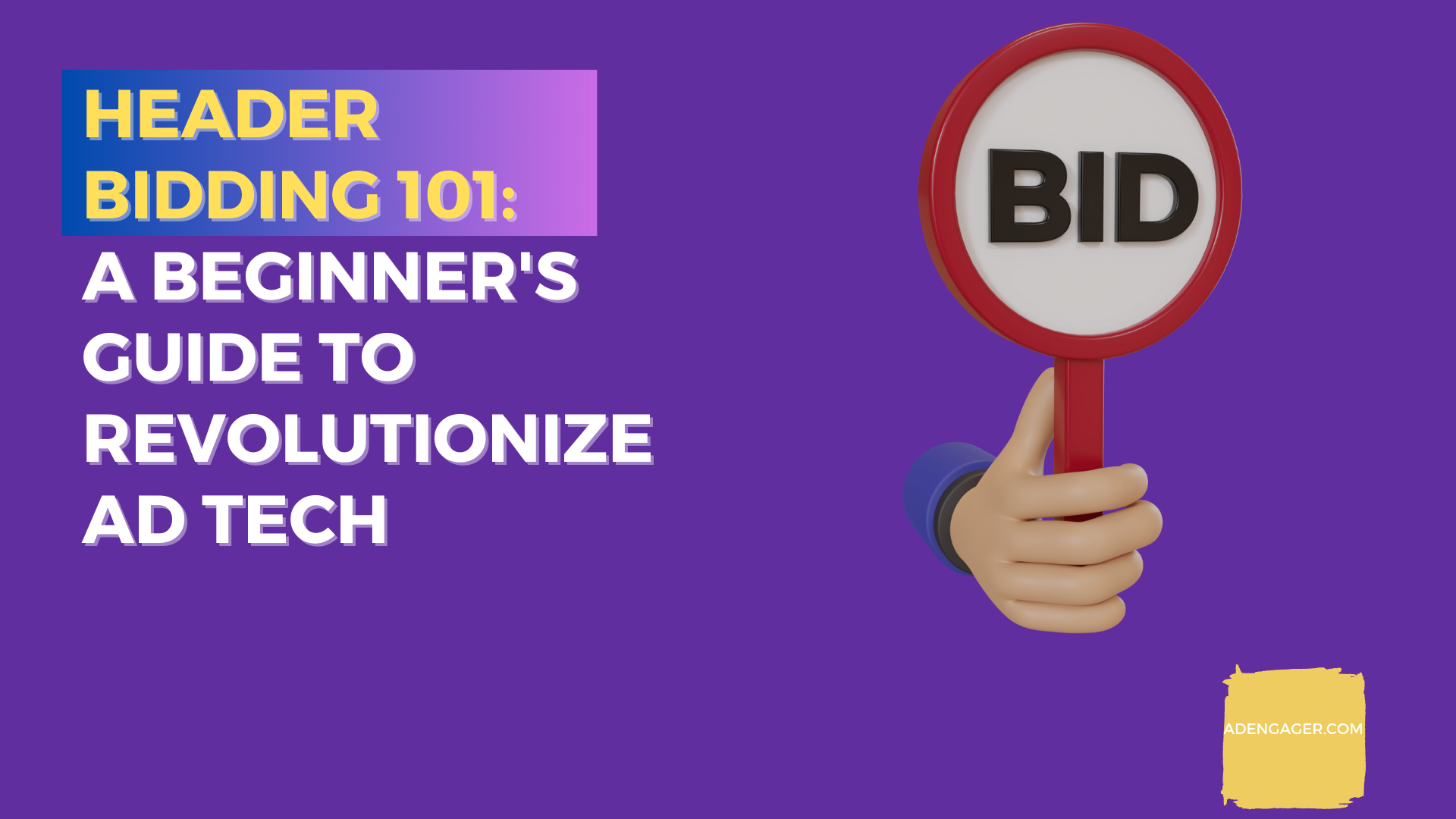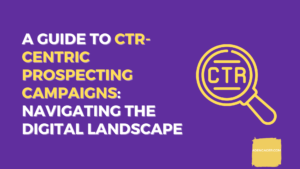The Power of Header Bidding in Programmatic Advertising

What is Header Bidding?
Header bidding is a method used in programmatic advertising that enables publishers to sell their ad space to multiple ad exchanges and networks at the same time. Unlike traditional waterfall auctions, where ad inventory is sequentially offered to different buyers, header bidding allows publishers to fetch bids from various sources simultaneously. This competition among buyers ensures that publishers receive the highest possible prices for their inventory.
In the realm of programmatic advertising, header bidding has gained considerable importance. It empowers publishers to compete effectively with Google’s AdSense platform, which traditionally held dominance. AdSense offered publishers a guaranteed minimum price, but header bidding enables publishers to access a broader range of potential buyers, potentially resulting in higher revenues.
Header bidding has come a long way since its inception in 2015, pioneered by Prebid.js. It has quickly become a popular and widely adopted programmatic advertising technique. The latest version, 2.10.0, was released in January 2023, offering new features and enhancements to further empower publishers.
Let’s take a glance at the timeline of header bidding’s history:
- 2015: Prebid.js introduces the first version of header bidding.
- 2016: Google AdSense integrates support for header bidding.
- 2017: AppNexus and Rubicon Project follow suit by adding support for header bidding.
- 2018: OpenX joins the wave and embraces header bidding.
- 2019: Server-side header bidding gains popularity as an alternative approach.
- 2020: The IAB Tech Lab releases the OpenRTB 2.5 specification, incorporating header bidding support.
- 2021: Header bidding establishes itself as the standard for programmatic advertising.
- 2022: The IAB Tech Lab unveils the OpenRTB 3.0 specification, introducing new header bidding features.
- 2023: Version 2.10.0 of header bidding is launched, offering advancements for publishers and advertisers.
Header bidding’s growth trajectory shows no signs of slowing down. With ongoing advancements and innovations, we can anticipate further improvements that will continue to benefit both publishers and advertisers. Stay tuned for the exciting future of header bidding in the ever-evolving advertising landscape.
According to a report by PubMatic, a leading provider of digital media solutions, 66.7% of publishers are using header bidding to sell their ad inventory. This number is expected to continue to grow in the future, as header bidding becomes the standard for programmatic advertising.
Key Term
- Header bidding wrapper: This is a piece of code inserted into a publisher’s website to facilitate the implementation of header bidding. The wrapper sends bid requests to multiple ad exchanges and networks and gathers the highest bid to present it to the publisher.
- Adapter: An adapter is a software component that acts as a bridge between the header bidding wrapper and a specific ad exchange or network. It enables communication and facilitates the bidding process.
- Technology: Refers to the underlying technical components that power header bidding. It involves technologies such as JavaScript, HTTP, and real-time bidding (RTB) protocols that enable seamless and efficient interactions between publishers, buyers, and ad exchanges/networks.
Importance of Header Bidding
Header bidding holds significant importance for publishers due to the benefits it provides. Firstly, it allows publishers to maximize their revenue potential by attracting bids from a wider range of demand sources. This increased competition ensures that publishers can obtain higher prices for their ad inventory.
Secondly, header bidding enhances the user experience on publishers’ websites. By replacing the traditional waterfall auction model, where each ad exchange is queried sequentially, header bidding consolidates bid requests and responses, reducing latency and page load times. This ultimately leads to a smoother browsing experience for users.
Header bidding is a valuable tool for publishers, enabling them to unlock higher revenues while simultaneously improving the user experience on their websites. By leveraging this technique, publishers can optimize their ad monetization strategies and compete more effectively in the programmatic advertising landscape
How Header Bidding Works

Header bidding simplifies the process of selling ad space for publishers. Here’s an overview of how it works:
- The publisher’s website loads a header bidding wrapper, a piece of code.
- The wrapper sends bid requests to multiple ad exchanges and networks.
- Ad exchanges and networks respond with bids, indicating the price they are willing to pay for the ad space.
- The wrapper collects all the bids and selects the highest one.
- The winning ad is displayed on the publisher’s website.
How implement header bidding, publishers need to follow these steps:
- Setup: Publishers choose a header bidding solution or develop their own. They set up the header bidding wrapper on their website.
- Integration: The wrapper is integrated with the publisher’s ad server, allowing bid requests and responses to flow smoothly
- Configuration: The publisher configures the wrapper to work with chosen ad exchanges and networks, specifying rules and preferences.
- Testing: The header bidding wrapper is tested thoroughly to ensure it functions correctly and delivers the desired results
- Deployment: Once testing i successful, the publisher deploys the header bidding wrapper on their website for live operation.
Differentiating between client-side and server-side header bidding
Header bidding can be categorized into two types: client-side and server-side.
- Client-side header bidding: The header bidding process happens directly in the user’s browser. Bids are sent to exchanges and networks while the webpage is loading.
- Server-side header bidding: The header bidding process occurs on the publisher’s server. Bids are sent to exchanges and networks after the webpage has finished loading.
Benefits of server-to-server header bidding
Server-to-server header bidding offers advantages compared to client-side header bidding:
Improved performance: Server-to-server bidding eliminates the need for multiple ad requests, resulting in faster page loading times and a better user experience.
Increased security: Server-side bidding helps protect publishers from ad fraud, as it reduces the risk of malicious ads reaching the user’s browser.
Reduced latency: Server-to-server bidding decreases the time between page loading and ad display, making ads appear more quickly to the user.
Header Bidding Implementation
Integrating header bidding with Google AdExchange
Google AdExchange is a widely used ad exchange platform that allows publishers to sell their ad space to many buyers. Integrating header bidding with Google AdExchange can help publishers maximize their ad revenue.
To integrate header bidding with Google AdExchange, publishers can utilize third-party header bidding solutions like Prebid.js or AppNexus. These solutions provide support for Google AdExchange.
Once a header bidding wrapper is created, publishers configure it to work with Google AdExchange. This involves providing the wrapper with the Google AdExchange account ID and Ad Exchange buyer IDs.
Using header bidding with DoubleClick for Publishers (DFP)
DoubleClick for Publishers (DFP) is a popular ad server that enables publishers to manage their ad inventory and sell it to buyers. Utilizing header bidding with DFP allows publishers to optimize their revenue potential.
To use header bidding with DFP, publishers can employ third-party header bidding solutions compatible with DFP, such as Prebid.js or AppNexus.
After creating the header bidding wrapper, publishers configure it to work seamlessly with DFP. This includes providing the wrapper with the DFP account ID and the DFP buyer IDs.
Header Bidding Technologies
Video Header Bidding
Video header bidding is a form of header bidding that focuses on selling video ad space. It allows publishers to simultaneously offer their video ad inventory to multiple ad exchanges and networks. This approach helps publishers obtain the highest possible prices for their video ads.
Video header bidding operates similarly to traditional header bidding, but with specific protocols and APIs designed for video ads.
Mobile header bidding
Mobile header bidding is tailored for mobile devices. It enables publishers to sell their mobile ad inventory to various ad exchanges and networks at the same time, maximizing their revenue potential.
Mobile header bidding follows a process similar to traditional header bidding but employs specific protocols and APIs optimized for mobile devices.
In-app header bidding
In-app header bidding is specifically developed for in-app ads. It empowers publishers to sell their in-app ad space to multiple ad exchanges and networks concurrently, increasing their chances of securing higher prices for their inventory.
In-app header bidding functions similarly to traditional header bidding, but employs dedicated protocols and APIs designed for in-app ads.
Pre-header bidding
Pre-header bidding occurs before a webpage fully loads. It involves sending bid requests to ad exchanges and networks before the user sees the page, enhancing page performance.
Pre-header bidding functions by initiating a request to ad exchanges and networks prior to page completion. The received bids determine the highest bidder, whose ad is displayed.
Header Bidding vs. Real-Time Bidding (RTB): Understanding the Difference
Header bidding and real-time bidding (RTB) are two distinct approaches in the realm of programmatic advertising. Header bidding allows publishers to offer their ad inventory to multiple exchanges simultaneously, increasing competition and revenue potential. It occurs before the traditional waterfall model, giving publishers more control and enabling them to secure higher prices for their inventory.
On the other hand, RTB takes place within the ad exchange ecosystem. It involves dynamic auctions for individual ad impressions, allowing advertisers to bid in real-time based on targeting criteria. RTB focuses on optimizing campaign performance and maximizing ROI for marketers.
Header bidding empowers publishers with increased control and competition, while RTB facilitates real-time buying and selling of ad impressions for advertisers. Both approaches offer unique benefits and play significant roles in the programmatic advertising landscape.
Header Bidding vs. Waterfall Method: Which One is Right for You?
Before diving into diffrenece lets undestand whats waterfall method, The Waterfall Method is an older technique used in digital advertising to sell ad inventory. In this method, ad impressions are offered to demand sources one at a time, following a predetermined order. It works like a waterfall, where each demand source gets a chance to fill the impression until it is sold or all the available demand sources have been tried. However, it is important to note that the Waterfall Method is less flexible and offers less control and transparency compared to newer approaches like Header Bidding.
| Feature | Header Bidding | Waterfall Method |
|---|---|---|
| How it works | Multiple demand sources are invited to bid simultaneously. | Ad impressions are offered sequentially to demand sources. |
| Benefits | Increased revenue, more control, and transparency. | Simpler implementation and easier to use. |
| Drawbacks | Can be technically complex and result in slower page load times. | May result in lower revenue and less control/transparency. |
Header Bidding and the Waterfall Method are two different approaches used in digital advertising. Let’s look at their key differences.
- Multiple demand sources: In Header Bidding, publishers can invite multiple demand sources (like advertisers or ad networks) to bid on an ad impression at the same time. In contrast, the Waterfall Method offers the ad impressions to demand sources one after another in a sequential order.
- Revenue: Header Bidding generally helps publishers generate higher revenue compared to the Waterfall Method. It allows publishers to get the best possible price for their ad inventory, maximizing their earnings.
- Control: With Header Bidding, publishers have more control over their ad inventory. They can decide which demand sources to invite to the auction and set the prices they are willing to accept. On the other hand, the Waterfall Method provides less control over the bidding process.
- Transparency: Header Bidding offers publishers greater transparency into the ad auction process. They can see which demand sources are participating in the bidding and the prices they are offering. This helps publishers make informed decisions about their inventory.
- Page load time: One drawback of Header Bidding is that it can potentially slow down the loading time of webpages. This is because additional code needs to be executed to facilitate the bidding process. In contrast, the Waterfall Method is less likely to impact page load times.
Example of how header bidding and Waterfall method works

When it comes to selling ad space on websites, publishers want to make sure they get the best possible price for their ad impressions. That’s where header bidding comes into play. Unlike the traditional waterfall method, header bidding offers publishers the opportunity to increase their revenue by inviting multiple demand sources to compete for each ad impression.
Let’s take a closer look at how header bidding works. Imagine a publisher has an ad impression that they value at $10. In a waterfall auction, the ad impression would be offered to the first demand source in the waterfall. If that demand source doesn’t place a bid, the impression moves down the waterfall to the next demand source. This process continues until a bid is received, and the highest bidder wins the impression. However, it’s possible that the final bid could be less than the initial $10 value.
On the other hand, in a header bidding auction, the ad impression is simultaneously offered to multiple demand sources. Each demand source has the chance to place a bid on the impression, and the highest bid wins. With this approach, it’s more likely that the impression will be sold for $10 or even more. The competition between demand sources in a header bidding auction helps drive up the price, maximizing the publisher’s revenue.
To better understand the difference, let’s compare the bidding numbers in a header bidding auction and a waterfall auction:
Bidding Numbers:
| Auction Type | Demand Source 1 | Demand Source 2 | Demand Source 3 | Winner |
|---|---|---|---|---|
| Waterfall | $5 | $7 | $8 | Demand Source 2 |
| Header Bidding | $10 | $12 | $11 | Demand Source 1 |
In the example above, the header bidding auction resulted in a higher price for the ad impression, with a winning bid of $11, compared to the waterfall auction where the winning bid was $8. This demonstrates how header bidding can lead to increased revenue for publishers.
Advantages and Disadvantages of header bidding for publishers
Header bidding brings several advantages for publishers:
- Increased revenue: Publishers can sell their ad space to multiple ad exchanges and networks simultaneously, maximizing their chances of getting the best prices for their inventory.
- Improved user experience: By reducing the number of ad requests sent to users’ browsers, header bidding enhances page loading times, resulting in a smoother browsing experience and a lower likelihood of ad blocking.
- More control: Publishers have greater control over their ad inventory sales. They can choose which ad exchanges and networks to work with and set their own pricing rules.
Benefits of header bidding for marketers
Header bidding offers benefits to marketers as well:
- Access to more inventory: Marketers gain access to a broader range of ad inventory, allowing them to reach a larger audience and potentially increase their campaign effectiveness.
- Enhanced targeting: Header bidding enables marketers to target their ads more precisely, improving the efficiency and performance of their campaigns.
- Increased competition: The competitive nature of header bidding can drive up prices for marketers, ensuring they have an opportunity to secure ad space at favorable rates.
Disadvantages and challenges of header bidding
Despite its benefits, header bidding does have some disadvantages and challenges:
- Technical complexity: Implementing header bidding can be complex, especially for publishers with limited technical resources. Proper setup and maintenance require technical expertise.
- Latency: The additional bidding process of header bidding can introduce latency, leading to slower page loading times and potentially affecting the user experience.
- Ad fraud: The complexity of header bidding can make it more challenging to detect and prevent ad fraud, posing a risk to both publishers and marketers.
Cost considerations for DSPs in header bidding auctions
Demand-side platforms (DSPs) participating in header bidding
- Bidding fees: DSPs typically charge fees for each bid they place in header bidding auctions. The fee amount can vary based on the DSP and the volume of bids made.
- Backfill fees: DSPs may also charge fees for backfill ads, which are displayed when no other bids are received in a header bidding auction. These fees can vary depending on the DSP and the volume of backfill ads served.
Metrics to measure header bidding
Measuring the adoption of header bidding by publishers involves considering various metrics. Here are some common ones:
- Revenue: The total amount of revenue generated through header bidding.
- eCPM: The average effective cost per thousand impressions earned from header bidding.
- Fill rate: The percentage of ad impressions successfully filled through header bidding.
- Latency: The time taken to load ads from header bidding on a webpage.
- Ad fraud: The extent of ad fraud detected within the header bidding ecosystem.
- Evaluating the success of header bidding campaigns
To evaluate the success of header bidding campaigns, different metrics can be analyzed:
- Revenue: The overall revenue generated specifically from header bidding campaigns.
- Conversion rate: The percentage of users who take a desired action, such as clicking on an ad or making a purchase, after being exposed to header bidding ads.
- Engagement: The level of user interaction and time spent engaging with header bidding ads.
- Evaluating the success of header bidding campaigns The impact on brand recognition and awareness achieved through header bidding campaigns.
Industry insights on the future of header bidding
The future of header bidding
- Mobile device dominance: As mobile usage continues to grow, header bidding will become increasingly important for mobile advertising.
- Programmatic advertising growth: Header bidding aligns well with the growing popularity of programmatic advertising, providing efficient and competitive ad buying and selling processes.
- Demand for transparency and accountability: The industry’s emphasis on transparency and accountability will drive further adoption of header bidding, as it allows for increased visibility and control in ad transactions. These trends indicate that header bidding will continue to evolve and play a significant role in the advertising ecosystem, ensuring improved performance, revenue opportunities, and more transparent ad experience.
The significance of header bidding lies in its ability to offer publishers better control over their inventory and pricing, resulting in higher revenues. Additionally, header bidding enhances the user experience by reducing ad latency and improving page loading times, leading to a more seamless browsing experience for users.
In conclusion, header bidding is a game-changing technology in the world of ad tech. It allows publishers to sell their ad space to multiple ad exchanges and networks simultaneously, maximizing their revenue potential and providing a more efficient and competitive ad marketplace.
Mobile header bidding holds immense potential due to the increasing use of mobile devices for internet access. It enables publishers to tap into a wider audience and optimize their ad monetization strategies specifically for mobile platforms, catering to the growing mobile user base.
Client-side header bidding, though relatively easier to implement, comes with its own set of considerations. While it offers advantages such as simplicity and flexibility, it may introduce latency and pose challenges in detecting and preventing ad fraud.
As the ad tech landscape evolves, header bidding is expected to continue growing and transforming the way ads are bought and sold. Its impact will be particularly notable in the mobile realm, where it can revolutionize mobile advertising and drive better outcomes for publishers, advertisers, and users alike.
Heeader bidding represents a significant advancement in ad tech, empowering publishers, improving user experiences, and shaping the future of digital advertising.






